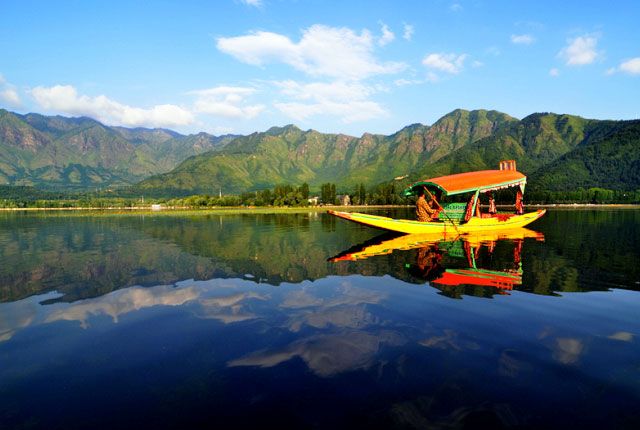
Botanical Garden : Kashmir’s Green Paradise
Table of Contents
ToggleOverview
Often referred to as the “Paradise on Earth,” Kashmir is not only scenic but also known for its biodiversity. In this pantheon of gifts, of course, are the botanical gardens in Kashmir-the serene oases that display such incredible flora. These are the final examples of harmony between nature, human design, and history. They are not resting places but are a rich ecological reservoir preserving and showcasing a great number of plant species found in Kashmir as well as in other parts of the world.
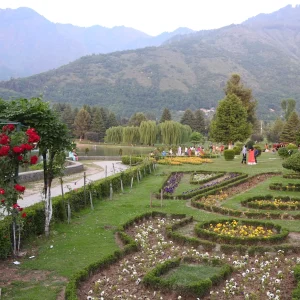
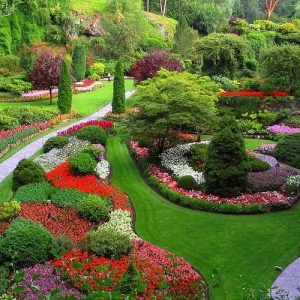
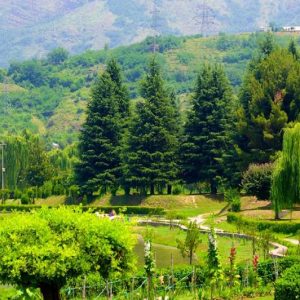
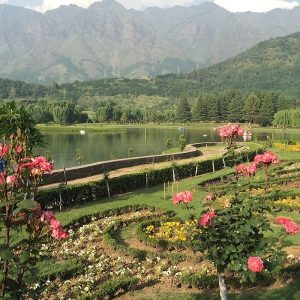
Introduction to Botanical Gardens in Kashmir
The concept of botanical gardens in Kashmir can be well-related with the rich cultural heritage of this region. They are known to prepare immaculately their collection of plant species, and in opening the doors to the visitors, they do so to understand the diverse flora of the valley. It can be nature lovers, photographers, botanists, or anything for the beautiful look of the region-all are assured to find something unique at the botanical gardens in Kashmir.
We will be exploring here major botanical gardens of Kashmir, the importance attached, evolution in detail, flora of these and when to visit such green heavens at their best.
Famous Botanical Gardens of Kashmir
Several important botanical gardens of Kashmir, which have great tourist appeal also attract many scientists. Being recreative place of amusement but not less of science, there lies a greater aspect of preservation in these of a special group of plants.
- Shalimar Bagh: Jewel of Mughal Gardens
Shalimar Bagh is the most beautiful and famous Mughal gardens in Kashmir. It was built in the early 16th century by the Mughal Emperor Jahangir. It is one of the masterpieces of grandeur in the Mughal garden design that spreads over 31 acres of land. Its glory-through terraced levels, cascading fountains, and lush greenery-embodies the epitome of Mughal architecture.
Ornaments galore of garden with ornamental trees, shrubs, and flowers make it extremely attractive. Beautiful bloom of flowers at spring time and summer give an alive beauty to the garden, which appears so colorful to be viewed from everywhere. Various Persian style channels and fountains inside make the ambience peaceful with an eye catcher, a site worth visiting, for nature enthusiasts and artists alike.
Shalimar Bagh is not only a botanical wonder but also a symbol of the rich cultural heritage of Kashmir, attracting tourists from all corners of the globe.
- Nishat Bagh: The Garden of Joy
Another great Mughal garden in Srinagar is the Nishat Bagh. This place, also known as the “Garden of Joy,” constructed by Asif Khan during early 17th century AD at the eastern edge of Dal Lake, treats visitors with matchless views of lake and its scenic surroundings that offer a complete, panoramic view with snow-covered tops. It represents a marvelous harmony of Mughal design combined with the finesse of Kashmiri sensibility.
There are 12 levels in this garden at the terraced level, covered with diverse ornamental plants and flowers such as jasmine, lilies, roses, and tulips. The middle canal in the centre of the garden along with that fabulous Mughal-style of water fountains gives it some peaceful feel and Nishat Bagh mainly is very well known for conducting the Tulip festival every year in the Spring season and for this festival guests come from most parts of the world.
The lush greenery, colorful flowers, and serene backdrop of Dal Lake make Nishat Bagh one of the best places to explore in Kashmir for someone interested in botanical beauty.
- Chashme Shahi: The Royal Spring Garden
Another garden which was historic in Srinagar was Chashme Shahi, or “Royal Spring.” It enhances the botanical landscape of Kashmir. Chashme Shahi was built in the 17th century by Mughal Emperor Shah Jahan, who placed the garden at the foot of the Zabarwan Range and close proximity to the Dal Lake. This is famous for a natural spring whose water is supposed to be medically therapeutic. This water supply flows to various channels passing through the garden.
The layout of Chashme Shahi is typical Mughal garden architecture with terraced lawns, cascading water fountains, and colorful flower beds. The garden accommodates many exotics and natives of the plants such as cypress, jasmine, and roses. Chashme Shahi is one of the best places to visit in Srinagar for those interested in the combination of nature and history.
- Botanical Garden of Srinagar: Paradise for Plant Lovers
Botanical Garden of Srinagar is comparatively more modern and science-oriented as opposed to Mughal gardens in the region. Found near Dal Lake, this botanical garden sprawls over 80 acres and boasts several plant species all around the globe. This scientific garden has sectioned off separate areas for aboriginal plants, medical herbs, and ornamental flowers.
One of the best attractions of this garden is alpine plant collection. The garden houses a beautiful rose garden, where photography enthusiasts love to click some snaps. Its peaceful ambiance along with well-kept pathways, it is ideal for a leisurely walk. Botanical Garden is one of the tourist spots, yet it is acting as a conservatory for rare and endangered plant species.
- Verinag Mughal Garden
Mughal Garden of Verinag is a place that reflects beauty and history, as located in the small town of Verinag within the district of Anantnag in Kashmir. The natural spring circumscribed by the garden provides river Jhelum’s primary water source. Spring water here has the reputation of being very clean and pretty.
The Verinag Mughal Garden was erected during the early 17th century by the Mughal Emperor Jahangir. There are several layers of terracing. The lawn is fresh green with tall trees and flowering plants, which present the atmosphere in a soothing freshness. This is somewhat a common type in the design of the Mughal garden. There are water channels and fountains besides the pathways.
Botanical Gardens and Flora-Fauna in Kashmir
Kashmir is home to a good variation of species and most varieties which are native only to Kashmir. The botany gardens provide some kind of a safe heaven to flora diversity for temperate regions of this land. Few of the famous plants which could be listed out in the alpine variety fall as under mentioned
- Alpine Plants: It does well within high elevation points of Kashmir. One can easily identify sections pertaining to Alpine species even in majority of botany gardens at Srinagar
- Rhododendrons: Rhododendrons are characterised by the presence of brightly colored flowers and can be seen easily in the botanical gardens of Kashmir during spring
- Coniferous trees: Deodar, pine, and spruce are some coniferous species which dominate some of the forest areas as well as most of the region’s botanical gardens.
- Medicinal plants: Medicinal plants have been used locally for healing purposes from ancient times in Kashmir. Most botanical gardens present throughout the region are significantly dedicated to the conservation of these medicinal plant species and planting more of them.
Besides plants, diversified fauna such as migratory birds, butterflies, and a lot of other insects are harbored in the Kashmir botanical gardens. In fact, these lush lands become very alluring to those wildlife tour enthusiasts who would wish to explore different biodiversity in the region.
Best Time to Visit the Botanical Gardens of Kashmir
The botanical gardens of Kashmir are beautiful in every season; however, your preference of the best time will be according to what you want to enjoy.
Spring (March to May): This could well be the peak season when people can actually go to Kashmir to visit botanical gardens. As these flowers and various others- -like tulip, roses are at its colourful peak colors of blooms within these seasons and this season gives comparatively cool weathers ideal to wander outdoors
Summer (June to August): In summer, Kashmir is warm enough, yet the lush green gardens and cool breeze drifting in from the surrounding mountains make the garden a cool retreat. The gardens continue to be in full bloom, and the cool climate of Kashmir makes it quite a relief from all the heat across India.
Autumn (September to November): Kashmir’s botanical gardens are too beautiful during autumn as well. The foliage is golden, and the air feels very fresh and crisp. The landscape looks differently fascinating as the leaves change color.
Winter (December to February): Winter in Kashmir is pretty cold, and most of the places are covered with snow. The gardens may not look their best during this time, but they are incredibly beautiful under a layer of snow. The number of tourists is low during winters, and hence the gardens are very serene to explore.
Conclusion: A Green Paradise for Nature Lovers
Botanical gardens in Kashmir would be a place for nature lovers, researchers, and photographers to get away from the chaos of the world. Actually, all this history, flora diversity, and sceneries embody the beauty of the natural beauty of Kashmir. From Mughal gardens in Srinagar to the serene peace of Botanical Garden near Dal Lake, you are sure to be spellbound by the beauty and grandeur of these green oases.
Take back those memories of planning your next visit to Kashmir; do not forget to visit such places where eyes and senses may feast on abundance of nature and serenity.
How to book Kashmir tour?
Contact a travel agency that specializes in Kashmir tours. You can reach out to the following for assistance:
- Phone:
- +91 7889 655596
- +91 7006 891267
- Email:
Inquire about tour packages, itineraries, and pricing, and confirm your booking for a memorable winter experience!
People Also Ask
What are the best botanical gardens to visit in Kashmir?
Kashmir is home to several beautiful botanical gardens, including Shalimar Bagh, Nishat Bagh, Chashme Shahi, Botanical Garden of Srinagar, and Verinag. Each garden offers unique historical significance, breathtaking views, and vibrant plant species.
When is the best time to visit botanical gardens in Kashmir?
The best time to visit the botanical gardens in Kashmir is during spring (March to May) when flowers are in full bloom. Summer (June to August) also offers pleasant weather, while autumn (September to November) showcases stunning foliage. Winter brings snow, adding a serene beauty.
Are the Mughal gardens in Kashmir open to visitors?
Yes, the Mughal gardens, such as Shalimar Bagh, Nishat Bagh, and Chashme Shahi, are open to visitors throughout the year. These gardens are not only historical landmarks but also well-maintained for public enjoyment.
What makes the botanical gardens in Kashmir unique?
The botanical gardens in Kashmir are known for their historical Mughal architecture, diverse plant species, and breathtaking landscapes. Many of these gardens were built by Mughal emperors in the 16th and 17th centuries and reflect a blend of Persian and Kashmiri design elements.
Are there any medicinal plants in Kashmir’s botanical gardens?
Yes, many botanical gardens in Kashmir, like the Botanical Garden of Srinagar, house a variety of medicinal plants. These include species such as saffron, black cumin, and various herbs used in traditional Kashmiri medicine.
Can I visit the botanical gardens during winter in Kashmir?
Yes, while winter in Kashmir can be cold and snowy, visiting the botanical gardens in winter offers a unique experience. The gardens look enchanting under a blanket of snow, and the less crowded atmosphere provides tranquility.
What types of flowers can I see in Kashmir’s botanical gardens?
Kashmir’s botanical gardens are home to a variety of flowers, including tulips, roses, lilies, rhododendrons, jasmine, and marigolds. The best time to see these flowers in bloom is during the spring season.
Are there guided tours available in Kashmir’s botanical gardens?
Yes, guided tours are available in many of Kashmir’s botanical gardens. Knowledgeable guides can provide you with insights into the history, plant species, and ecological importance of the gardens.
Is there an entry fee for visiting botanical gardens in Kashmir?
Yes, most of the botanical gardens in Kashmir, including Shalimar Bagh and Nishat Bagh, charge a nominal entry fee. However, entry to some gardens might be free during certain months or special occasions.
Are the botanical gardens in Kashmir accessible for people with disabilities?
Some of the larger botanical gardens in Kashmir, such as Nishat Bagh and Shalimar Bagh, are relatively accessible for people with disabilities. However, it’s recommended to check with the authorities for specific accessibility features before visiting.
Can I take photographs in Kashmir’s botanical gardens?
Yes, photography is allowed in most of Kashmir’s botanical gardens. In fact, these gardens offer stunning opportunities for photography, especially during the blooming season when flowers and landscapes are at their best.
What are the opening hours of botanical gardens in Kashmir?
The typical opening hours of botanical gardens in Kashmir range from 8 AM to 7 PM during peak season. However, these hours may vary slightly depending on the garden and the time of year, so it’s best to confirm in advance.
Can I visit the botanical gardens during the Tulip Festival in Kashmir?
Yes, visiting Kashmir’s botanical gardens during the Tulip Festival (usually held in April) is an excellent idea. The Nishat Bagh and other gardens are adorned with colorful tulips, creating a vibrant display that attracts visitors from around the world.
What is the historical significance of the Mughal gardens in Kashmir?
The Mughal gardens in Kashmir, such as Shalimar Bagh and Nishat Bagh, were built during the Mughal Empire and are famous for their symmetrical design, terraced layouts, and use of water features. They reflect the grandeur of Mughal architecture and serve as cultural and historical landmarks.
What types of wildlife can I spot in Kashmir’s botanical gardens?
In addition to a rich variety of plants, Kashmir’s botanical gardens are home to wildlife such as migratory birds (e.g., Kashmir flycatcher), butterflies, squirrels, and hares. These gardens provide a peaceful environment for various species.
Are there any alpine plants in Kashmir’s botanical gardens?
Yes, Kashmir’s botanical gardens feature alpine plants, especially those found in high-altitude areas. These plants, including edelweiss, primulas, and gentians, thrive in the cool, temperate climate of the region.
How long should I spend in Kashmir’s botanical gardens?
On average, visitors typically spend 1-2 hours exploring a single botanical garden. If you plan to visit multiple gardens in a day, consider allocating half a day to each garden to fully enjoy the beauty and learn about the diverse flora.
What is the best way to reach the botanical gardens in Srinagar?
The botanical gardens in Srinagar, including Shalimar Bagh and Nishat Bagh, are easily accessible by road from Srinagar city. You can hire a taxi, use a private car, or take a local bus to reach the gardens. Dal Lake is also nearby, and many visitors enjoy taking a shikara ride to these gardens.
Are there any botanical gardens in the countryside of Kashmir?
Yes, there are smaller botanical gardens located in the rural areas of Kashmir, such as Verinag in the Anantnag district. These gardens are less crowded and offer a more peaceful experience compared to the more popular gardens in Srinagar.
Can I learn about Kashmir’s indigenous plants in the botanical gardens?
Yes, the botanical gardens of Kashmir provide an excellent opportunity to learn about the region’s indigenous plants. Many gardens, especially the Botanical Garden of Srinagar, feature sections dedicated to native species, including medicinal herbs and local flora.
What are the most popular trees found in Kashmir’s botanical gardens?
Kashmir’s botanical gardens are home to numerous trees, including the towering deodar, pine, cypress, and poplar. Chinar trees are also quite iconic, especially in gardens like Nishat Bagh and Shalimar Bagh.
Can I purchase plants or souvenirs from Kashmir’s botanical gardens?
Yes, many botanical gardens in Kashmir have souvenir shops or local vendors selling plants, seeds, and Kashmiri handicrafts. You may find various plants native to the region as well as locally-made products like saffron and woolen items.
Are there any seasonal events at the botanical gardens in Kashmir?
Yes, Kashmir’s botanical gardens often host seasonal events such as the Tulip Festival (spring), Rose Festival, and cultural performances, especially in gardens like Nishat Bagh. These events are great opportunities to experience the local culture along with the natural beauty of the gardens.
Is photography allowed in Kashmir’s botanical gardens?
Yes, photography is generally allowed in the botanical gardens, including the Mughal gardens. However, there might be restrictions in certain areas, such as inside specific historical monuments or near restricted sites. Always ask the staff for permission before capturing photos in sensitive areas.
What are the benefits of visiting botanical gardens in Kashmir?
Visiting the botanical gardens in Kashmir provides multiple benefits, including a relaxing retreat surrounded by nature, an educational experience regarding diverse flora, and the opportunity to explore Kashmir’s rich cultural heritage through its historic gardens.



